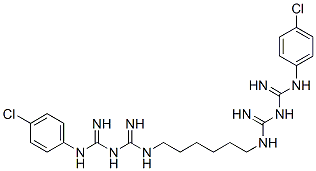Tolnaftate , ≥98% , 2398-96-1
Synonym(s):
Methyl-(3-methylphenyl)carbamothioic acid O-2-naphthyl ester;Tolnaftate
CAS NO.:2398-96-1
Empirical Formula: C19H17NOS
Molecular Weight: 307.41
MDL number: MFCD00056611
EINECS: 219-266-6
| Pack Size | Price | Stock | Quantity |
| 1G | RMB44.00 | In Stock |
|
| 5G | RMB87.20 | In Stock |
|
| 25G | RMB308.00 | In Stock |
|
| others | Enquire |
PRODUCT Properties
| Melting point: | 110.5-111.5°C |
| Boiling point: | 453.4±38.0 °C(Predicted) |
| Density | 1.1328 (rough estimate) |
| refractive index | 1.6970 (estimate) |
| storage temp. | Sealed in dry,2-8°C |
| solubility | Soluble in chloroform at 50 mg/ml. Sparingly soluble in ethanol or methanol |
| form | powder |
| pka | -0.35±0.50(Predicted) |
| color | white to off-white |
| Water Solubility | <0.1 g/100 mL at 22 ºC |
| λmax | 258nm(MeOH)(lit.) |
| Merck | 14,9519 |
| InChIKey | FUSNMLFNXJSCDI-UHFFFAOYSA-N |
| LogP | 5.142 (est) |
| NIST Chemistry Reference | Tolnaftate(2398-96-1) |
| EPA Substance Registry System | Tolnaftate (2398-96-1) |
Description and Uses
Tolnaftate is a thiocarbamate antifungal agent. It is active against clinical isolates of the dermatophytes T. rubrum, T. mentagraphytes, T. verrucosum, E. floccosum, and M. canis (MIC50s = 50, 100, 6, 50, and 50 ng/ml, respectively), as well as 18 additional yeast and filamentous fungi species (MIC = 0.003-0.8 μg/ml)., Tolnaftate also reduces aflatoxin production in A. parasiticus in a concentration-dependent manner. It inhibits squalene epoxidase with an IC50 value of 12.5 μg/ml in a cell-free assay.
Tolnaftate is used to study the mechanism of ergosterol (sterol) biosynthesis at the rate-limiting step of squalene epoxidase inhibition. Tolnaftate is clinically used to treat cutaneous infections such as athlete?s foot, jock itch, and ringworm1. It also has been used as a comparator compound for antifungal efficiency studies.
Safety
| Symbol(GHS) |  GHS07 |
| Signal word | Warning |
| Hazard statements | H302-H315-H319-H335 |
| Precautionary statements | P261-P305+P351+P338 |
| WGK Germany | 2 |
| RTECS | FD8891300 |
| TSCA | Yes |
| HazardClass | IRRITANT |
| HS Code | 2930206050 |
| Toxicity | LD50 in mice, rats (g/kg): >10, >6 orally; >6, >4 s.c. (Hashimoto) |





